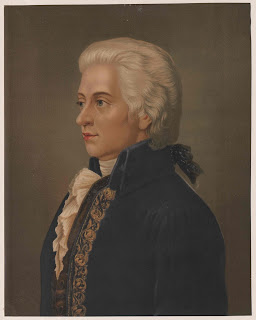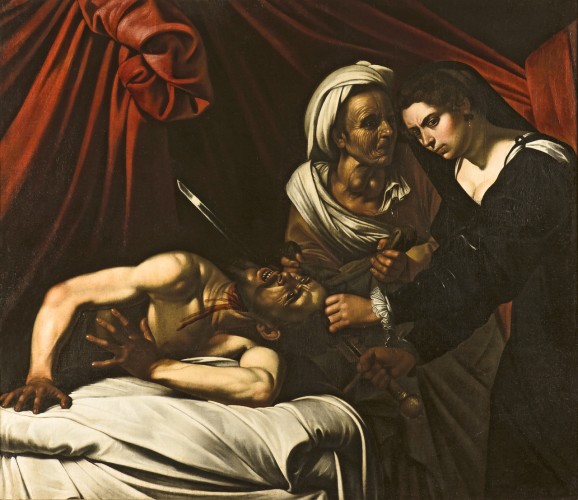 |
| Graphic © Unraveling Musical Myths |
Thank you for your ongoing support during my period of hiatus - your comments and emails are very much appreciated!
I will be returning on a more frequent basis shortly - in the interim, I have decided to add to my blog a new series, Unraveling Musical Myths: Art Corner, wherein masterful works of art of all mediums will be discussed with a musical slant. I am a firm believer in the free exchange of knowledge and the appreciation of the arts (in all of its many forms) and thought it quite fitting to highlight both known, and relatively unknown masterpieces from both realms, particularly when they compliment each other so well.
Just as the great pioneers of opera looked to the drama of Ancient Greece for both influence and subject matter, and as maestri from all eras payed homage to major events in world history, in religion and in literature through music, so too did many of the most iconic painters and sculptors (as the reader will discover through "recommended listens" - gorgeous music from the classical realm with a shared mythology.)
In many ways, the concept of "Gesamtkuntswerk," as defined by Richard Wagner - as an all-encompassing synthesis of the arts - predates, by far, the Romantic era in which the concept would become widely known.
The format presented here will be on an introductory basis - that is, in a brief, analytical form, with an aforementioned "recommended listen," or related piece of music at the end of each analysis, meant to serve as a compliment to each work of art. This succinct format is intentional, with the hope that it will encourage the inquisitive reader to further explore this world of immeasurable beauty.
We begin with a stunning funerary-inspired statue of an ailing Mozart, presently housed at the Musée des Beaux-Arts de Bordeaux in France:
 |
| CLICK ON IMAGE TO ENLARGE |
Ravished and near death, Italian sculptor Rinaldo Carnielo's (1853-1910) "Mozart Expirant" (Mozart Expiring) is a both shocking and somber sight to behold (as is much of Carnielo's oeuvre, which is renowned for an indulgence in the macabre.)
Executed in 1877, the life size monument - which stands just below five feet - depicts an emaciated likeness of composer - imagined as he would have appeared in his final moments, his infamous Requiem in hand. It is this sordid scene which recalls the extant testimonials left behind by those present at Mozart's bedside in the days and hours before his untimely death, namely, that of Sophie Weber, sister-in-law to the composer, who recalled her experience to Mozart biographer Georg Nikolaus von Nissen in 1823:
"...a long search was made for Dr. Closset...he came and ordered cold poultices to be placed on Mozart's burning head, which however, affected him to such an extent that he became unconscious and remained so until he died. His last movement was an attempt to express with his mouth the drum passages in the Requiem. That I can still hear." [1]
We know that Mozart fell ill in whilst busying himself in Prague, where the composer had been commissioned to write an Imperial opera (La Clemenza di Tito) for the coronation festivities of Leopold II, mere months before his return home to Vienna whereupon he would become bedridden.
Carnielo's decision to place Mozart on an armchair rather than on a bed is both curious and visually (not to mention emotionally) striking: the composer's gaunt physique is showcased on full display, his torso unobstructed by bed covers, resting not so much in a slump but rather on a sharp angle, foreshadowing the soon-to-be onset of rigor mortis. Even so, there remains something somewhat regal about his posture. Even his throne-like chair, ornate with trimmings, and the oversized cushions behind his head and underneath his elegantly clad foot (in opulent damask, no less) speak to his status as a (often) revered musician and composer of 'God-given' ability - an otherworldly association which had so permeated the minds and hearts of almost all who had the pleasure of encountering his music.
It is this dichotomy, so clearly displayed by Carnielo, between the exalted, earthly self and man's pitiable mortality which recalls, for me, the famous tale of the Three Living and the Three Dead - a medieval moral analogy well known among über spiritual 19th century Western Europeans.
 |
| Click image to display full leaf. This detail of a miniature from the 14th century De Lisle Psalter depicts the cautionary tale of the Three Living and the Three Dead: a moral analogy on the pitiable, equal state of death over worldly rank and status. It accompanies an abridged version of the Anglo-Norman poem, Le dit des trios morts et trios vifs, which details the conversations between the mortal men and the spectres, each cadaver presented in various states of decomposition: So spoke the Three Living: ‘"I am afraid" , "Lo, what I see!" , and "Methinks these be devils three." Reply the Three Dead: "I was well fair", "Such shall you be", and "For God’s love, beware by me." It is this last cadaver - the furthest decomposed of the three dead, who truly drives the metaphorical nail in the coffin when he informs the three living, causally enjoying a day's sport: (in full verse) "Know that I was head of my tribe, princes, kings and nobles, royal and rich, rejoicing in wealth, but now I am so hideous and bare that even the worms disdain me." | Translated from old English, British Library, Arundel MS 83, f. 127v | |
As it turns out, rather many - and nearly all of them quite dubious. Even the recollection of Sophie Weber has since been called into question - her precise, word-for-word accounts of Mozart's final moments, recalled 33 years after the fact for a biography to be written by the second husband of Wolfgang's widow Constanze (van Nissen) is considered by many modern scholars to have been a result of the sensationalism that surrounded the composer's demise - a phenomenon which began almost immediately after death, and which continues to persist, even today.
Constanze herself has been accused of abetting the rumor mill with a now infamous account of an outing to the Prater with a sickly Mozart in which he allegedly confided in his spouse a fear of having been poisoned, and a belief that the Requiem on which he was composing was intended for his own funeral. Stanzi is believed to have been the source of this story for the saintly biography by Franz Xaver Niemetschek - the first full length account of the composer's life, published in 1798. She would later dismiss the idea of poisoning as "absurd," only to recapitulate the tale - with various deviations to her original account - some 30 years later to the English musician Vincent Novello and his wife Mary upon their pilgrimage to Salzburg in 1829 where they interviewed the composer's sister Nannerl, Sophie, and Constanze - who they erroneously believed was impoverished. In this latest, sensational telling of the Prater affair, Constanze insists Mozart pursued his Requiem with vigor - not questionably - but rather, certain that it was his purpose to compose his own Mass for the Dead. The poison now coursing through his veins, in this later account by Stanzi, even had a name: Acqua Toffana.
"Some six months before his death he was possessed with the idea of his being poisoned - 'I know I must die', he exclaimed, 'someone has given me acqua toffana and has calculated the precise time of my death - for which they have ordered a Requiem. It is for myself that I am writing this."
- from the diary of Novello, p. 125, as recounted by the widow Constanze
Again, Constanze referred to the idea of poison having killed her husband as absurd, only to once again, seemingly confirm her husband's testimony in a subsequent letter referencing the couple's eldest son, Karl Thomas, in which she reiterates the latters' belief that
"...he does not have, as his father once had, envious people to fear, who strive after his life." [2]
Clearly, it seemed Constanze was not the only member of the surviving Mozart clan to have shouldered (or at the very least, perpetuated) thoughts of a homicidal death for the dearly departed.
Undoubtedly, Carnielo would have heard of the fantastical rumor that had been circulating Europe for the better part of six decades of an insane Antonio Salieri, institutionalized and delirious, claiming himself to be the administer of the lethal tonic - this account, since debunked by Salieri's around-the-clock caregivers (who swore to having never heard Salieri utter such words) was spread with such enthusiasm that it even made the writing book of Ludwig van Beethoven. In fact, by the time Carnielo conceptualized his marble tribute to Mozart, the celebrated playwright Alexander Pushkin had already staged his one-act play based on this sensational fabricated account: Mozart & Salieri.
Wolfgang's association with Freemasons was also repeatedly made the focal point for vocal conspiracists who believed the composer had been unceremoniously "offed" by one of his own Brothers. The roots of this diabolical theory were first planted in Germany in 1861, with a series of polemic essays in the popular periodical "Aus der Mansarde" (Out of the Attic) ran, edited, and largely written by G.F Daumer.
This was the Europe - and, more importantly the Mozart - known to Carnielo: one of a man of near-mythical status who had blazed the continent - the "God-like" hero with a boyish countenance, both victor and victim of his own destiny, whose pitiable, pathetic demise left in its wake a convoluted, mysterious legacy as contradictory as the mortal himself.
 |
| Click to enlarge. The Last Hours of Mozart, ca. 1860, Henry Nelson O'Neil ARA |
It is said Mozart performed his part with an unnatural, brave sense of vigor - that is until the Lacrimosa, at which point he is said to have broken down, sobbing. This apocryphal tale seems quite fitting - Mozart had completed the first eight bars of this movement prior to his death, making the final words he set to music "ah, days of tears and mourning!"
Recommended listen:
Franz Xaver Süßmayr's gorgeous completion of the Requiem, and the Lacrimosa itself, has been posted numerous times on Unraveling Musical Myths, so for a change, I am choosing to feature 19th century composer Sigismond Thalberg's exquisite transcription of the Lacrimosa (Lacrymosa), as performed by the French virtuoso pianist Cyprien Katsaris. While there is no match for a full choir setting, Thalberg's rendition, in my opinion, certainly does the composer justice, particularly in the hands of the expert musician Katsaris. Listen below:
Did you know?
Carnielo's Mozart would set a precedent for later "expiring" figures, which were sculpted by the artists' contemporaries - notably the 1882 "Molière mourant" (pictured above, left) by Henri Allouard (of the famous playwright /collaborator of French baroque composer Jean-Baptiste Lully), and the funerary sculpture of composer Hector Berlioz, "Berlioz mourant," (above right) executed by Pierre Joseph Rambaud ten years later, in 1892, presently housed at the Paris Odéon and Le musée des Beaux-Arts de Grenoble, respectively.
Bibliography:
[1]Emily Anderson tr./ed. The Letters of Mozart and His Family, 1938, pp. 976-7
[2]Wilhelm A. Bauer, Otto Erich Deutsch, Joseph Heinz Eibl, Mozart: Briefe und Aufzeichnungen, 515
-Rose.








